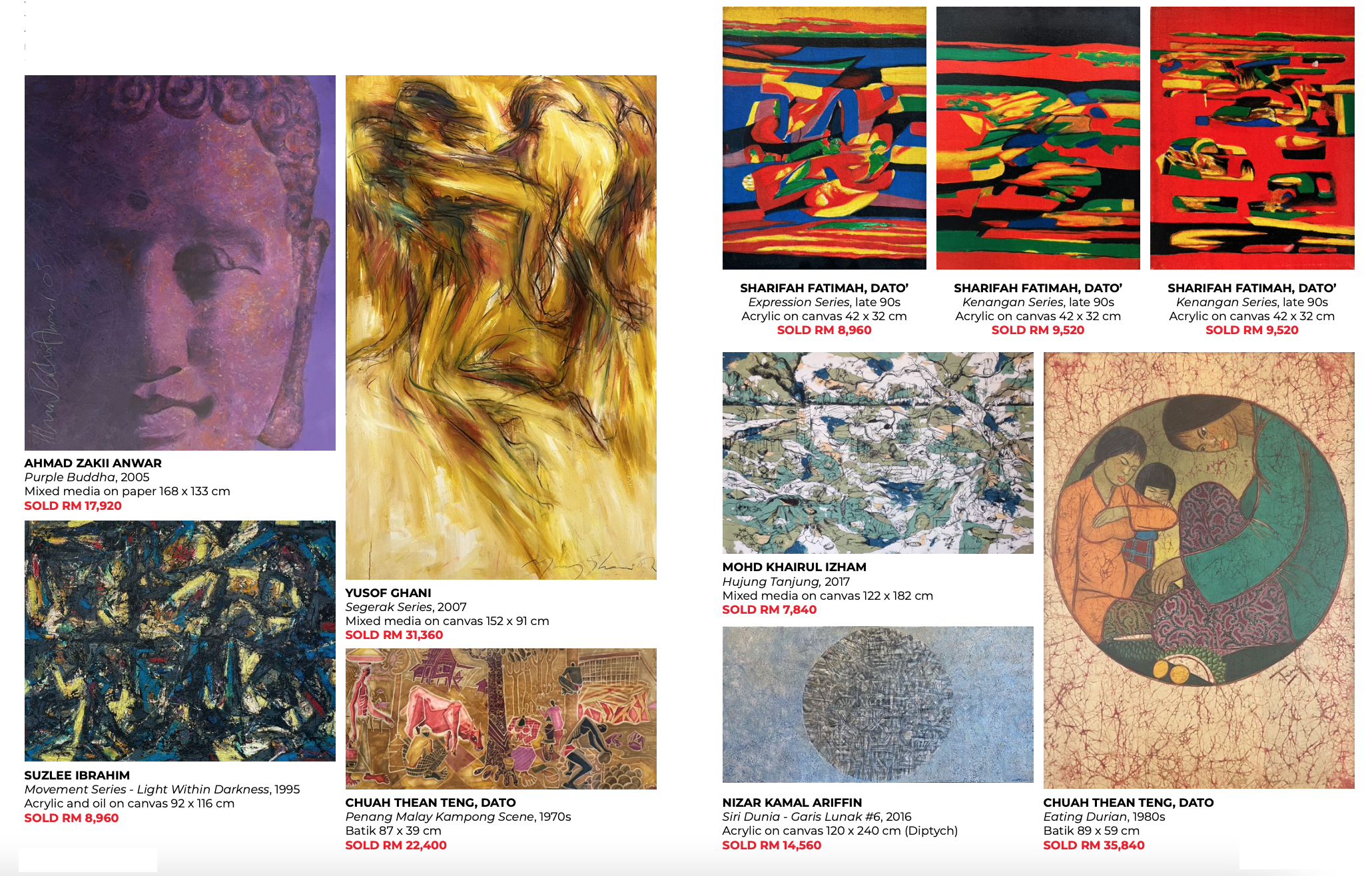KLAS Art Auction
KLAS ART AUCTION REFLECTS RISING INTEREST IN SOUTHEAST ASIAN ART
The recent KLAS Art Auction, held on 14th June 2025 at 150, Jalan Maarof, once again reaffirmed Kuala Lumpur’s position as a vibrant hub for fine art appreciation. Bringing together an impressive catalogue of works, the auction featured masterpieces by some of Malaysia’s most celebrated artists, including Abdul Latiff Mohidin, Syed Ahmad Jamal, Yusof Ghani, and Awang Damit Ahmad. Adding to the international allure of the evening were works by renowned foreign artists such as Anthony Poon, Tan Choh Tee, and Choo Keng Kwang, offering collectors and enthusiasts a diverse glimpse into the region’s rich artistic landscape.
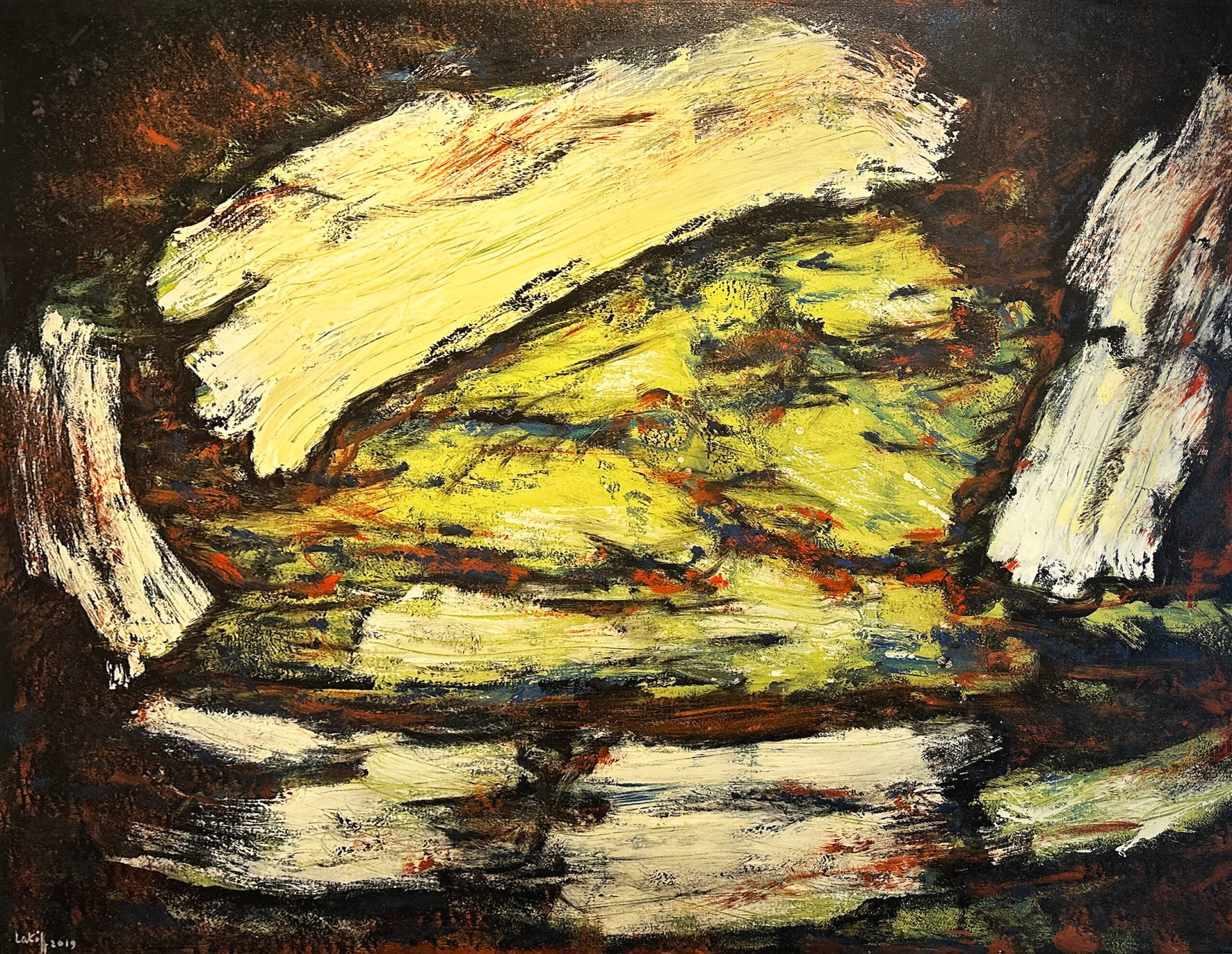
Abdul Latiff Mohidin is widely regarded as one of Southeast Asia’s most celebrated modernist artists, renowned for his Pago Pago series and his distinctive exploration of landscapes, nature, and abstraction. His work often reflects a deep connection to Southeast Asian forms, spiritual traditions, and natural environments, blended with modernist techniques.
Green Landscape II (2019) represents a later period in his career, where he continued to reinterpret natural forms using bold colors, organic shapes, and rich textural qualities.
As suggested by the title, the work likely features lush greens, dynamic compositions, and abstract elements inspired by tropical landscapes. Rather than offering a literal depiction of nature, it presents a more introspective or spiritual interpretation.
This artwork was part of an exhibition at The Edge Galerie, held from 28th November to 12th December, 2021, and was also featured in The Options pullout of The Edge publication.
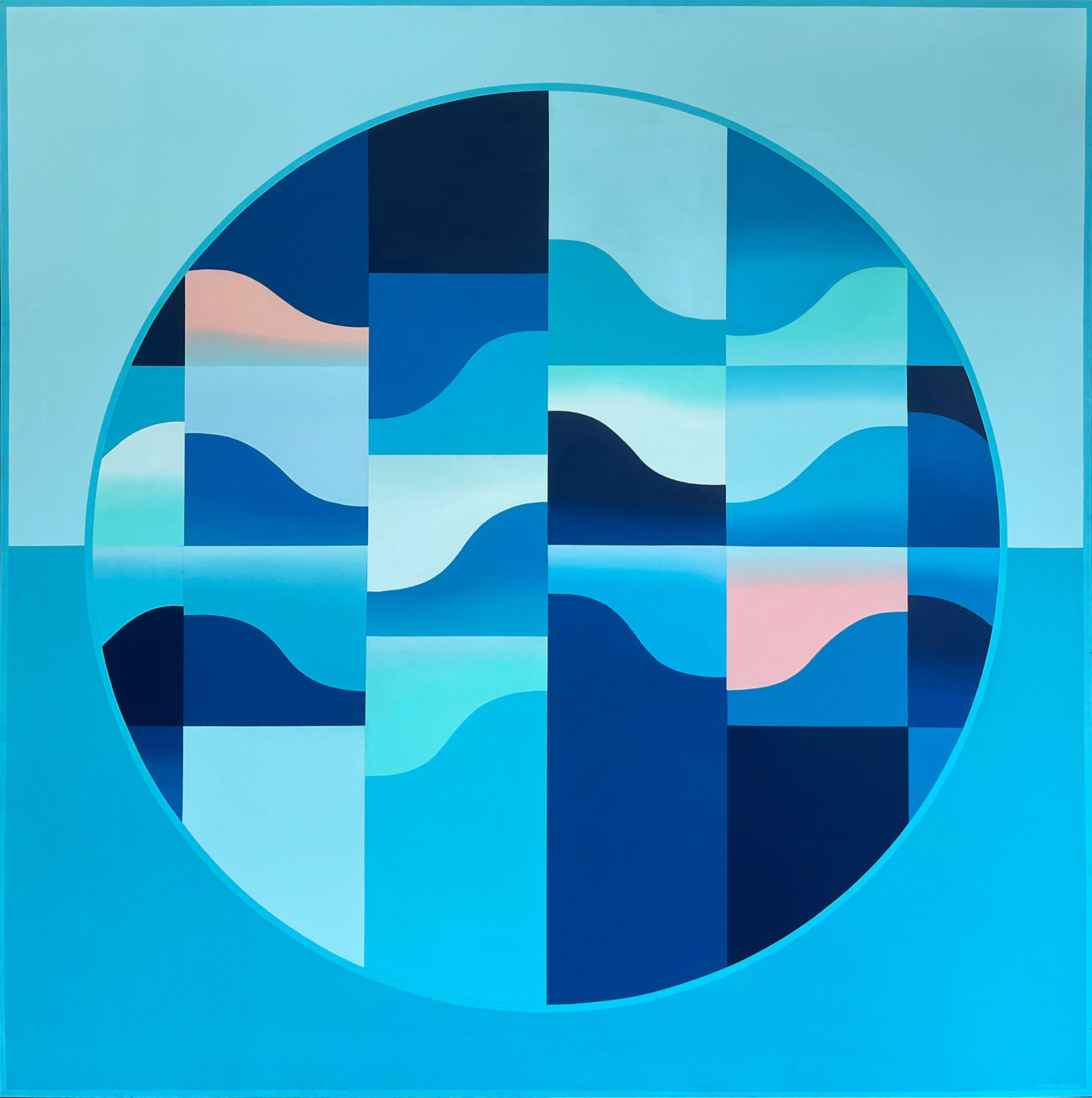
Born in 1945, Anthony Poon is recognized as one of the foremost figures in the development of abstract art in Singapore. Throughout his distinguished career, Poon played a vital role in shaping the visual arts landscape, particularly through his disciplined approach to form, color, and spatial composition.
After graduating from the Nanyang Academy of Fine Arts in 1964, his artistic journey took him to the United Kingdom, where he further honed his craft at the Byam Shaw School of Art in London and the Regional College of Art in Bradford.
Poon’s contributions to the cultural fabric of Singapore were formally recognized in 1991 when he was awarded the Cultural Medallion, the nation’s highest accolade for artistic achievement. His works are now part of important public and private collections in Singapore and internationally.
Aqueous Waves, a significant piece from his later period, exemplifies Poon’s evolution from strict geometric abstraction to compositions that embrace more fluid, organic forms. This work was included in Singapore’s National Collection and is documented on Roots.sg, the digital archive of the National Heritage Board.
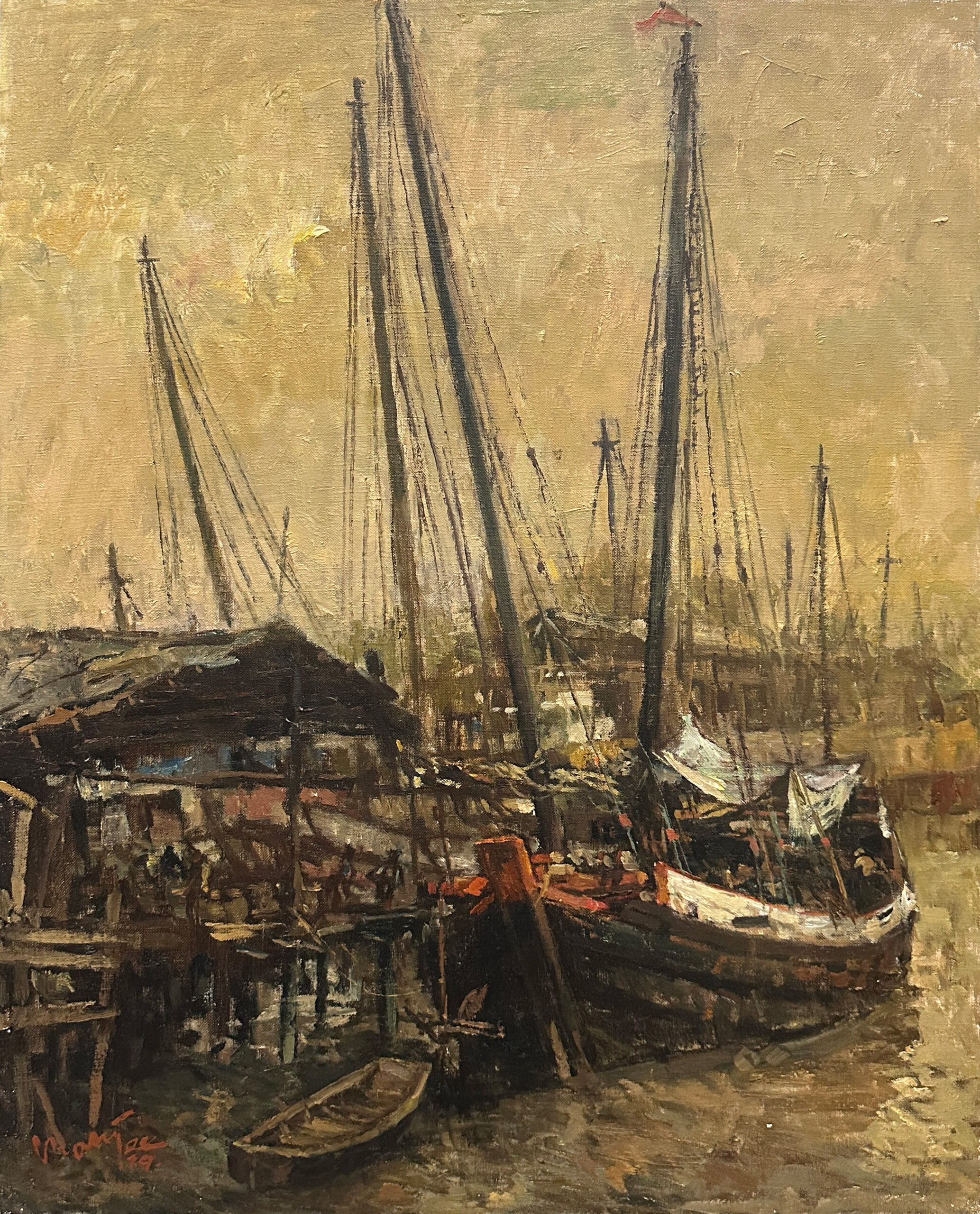
Tan Choh Tee is regarded as one of Singapore’s most prominent painters, known for his ability to preserve the spirit of the nation’s past through his distinctive Impressionist style. Born in 1942 in Guangdong, China, Tan relocated to Singapore in 1953, a move that would shape his life and artistic journey.
His formal training began at the Nanyang Academy of Fine Arts, where he studied under some of the leading figures of Singapore’s art scene. It was here that he developed a strong foundation in Eastern and Western artistic traditions, a dual influence that continues to inform his work.
Over the decades, Tan Choh Tee has established himself as a key figure in documenting Singapore’s rapidly evolving urban landscape. His plein air, or outdoor paintings are particularly celebrated for their ability to capture the fleeting charm of old Singapore.
Scenes of Chinatown’s bustling markets, the historic Singapore River, and the rustic simplicity of kampong villages feature prominently in his work, serving as visual records of places and moments that have all but disappeared beneath the city’s modern skyline.
Tan’s works are distinguished by his mastery of color and brushwork. Employing a rich, vibrant palette, he brings life to familiar street scenes, architectural facades, and everyday moments. His expressive, confident brushstrokes evoke the atmosphere and character of each scene, whether it is the early morning bustle of a marketplace or the quiet, sunlit corner of a shophouse-lined street. The interplay of light and shadow in his paintings adds depth and mood, reflecting his keen observation and deep affection for his surroundings.

Choo Keng Kwang’s 1977 painting, Singapore River stands as a significant example of his work that captures the spirit of Singapore’s cultural heritage. Created using oil on canvas, the artwork measures approximately 55 by 91 centimeters and bears the artist’s signature. This painting was part of a special calendar series produced in 1977, which featured six works depicting traditional trades and everyday scenes of Singapore.
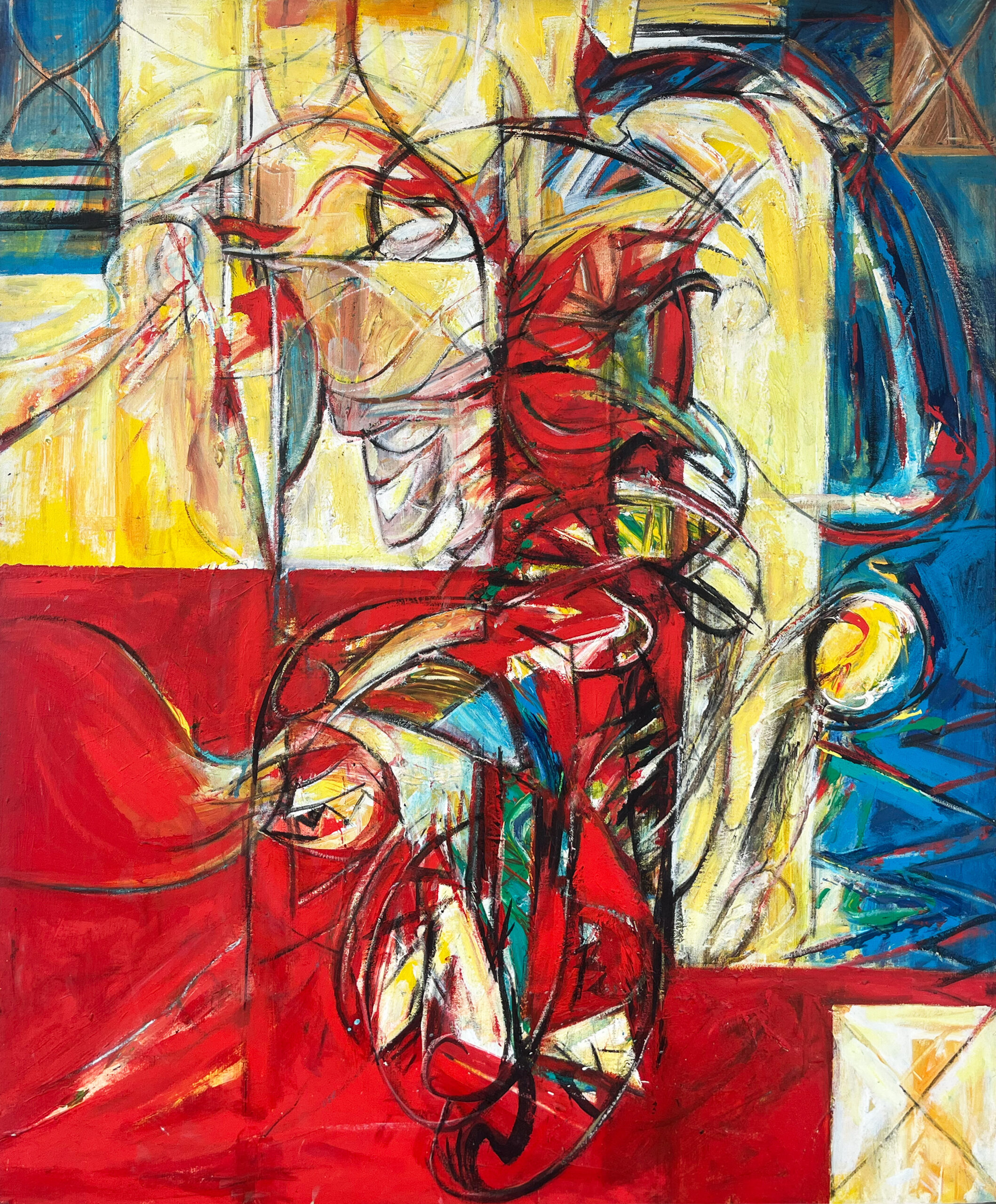
Yusof Ghani’s Siri Wayang series, produced between 1997 and 1999, explores themes of performance, identity, and the roles individuals play within society. Inspired by traditional shadow puppetry and theatrical traditions, this body of work reflects Ghani’s ongoing interest in examining the human condition and offering social commentary through the language of abstract expressionism.
The Siri Wayang series is recognized for its energetic compositions and layered visual narratives. These works often invite reflection on the complexity of human behavior and the structures that shape society. Ketulan II, a piece from this series, continues this exploration by delving into the symbolic relationship between masks, performances, and the often concealed roles that individuals assume in public and private life.
Through bold forms, dynamic brushwork, and abstract symbolism, Ghani challenges viewers to consider the blurred line between appearance and reality, and the theatrical nature of human interaction.

Syed Ahmad Jamal was one of Malaysia’s most influential modern artists and a leading figure in art education. He is widely recognized for his role in shaping the development of modern art in Malaysia and was honored as a National Art Laureate, or Seniman Negara, in 1995. From 1983 to 1991, he served as the Director of the National Art Gallery, known today as Balai Seni Negara, where he played an important role in promoting modern and abstract art and worked tirelessly to strengthen public support for Malaysian artists and the arts.
Throughout his career, Syed Ahmad Jamal developed a distinctive style that combines modern abstraction with elements of Islamic, Malay, and broader Asian artistic traditions. His work often reflects a deep engagement with spiritual ideas, architectural forms, and geometric structures. Using bold color palettes and expressive compositions, his paintings evoke intellectual depth and emotional resonance. KMJSN is a striking example of this artistic approach, demonstrating his ability to merge cultural heritage with modern visual language.

Khoo Sui Hoe, born in 1939 in Kedah, is one of Malaysia’s leading fine artists. He studied at the Nanyang Academy of Fine Arts in Singapore and later at the Pratt Graphic Center in New York. Over the years, he has received several awards, including first prize in the Malaysian Art and Craft competition in 1965 and the John D. Rockefeller 3rd Fund Grant in 1974.
Khoo’s 4 Clouds Landscape (1971) is a striking oil on canvas measuring 87 by 100 centimeters with frame. Signed “Sui Hoe 71” in the lower right, the painting blends surrealism with expressive landscapes. Bold red hills and four stylized clouds create a dreamlike balance between land and sky, capturing Khoo’s signature style.

Eng Tay is known for his ability to convey quiet emotion and poetic simplicity, and The Young Beauty reflects his lifelong interest in themes of intimacy, femininity, and tradition. Created in his signature style, the painting features soft contours and a warm, muted color palette. The young figure appears timeless and immediate, portrayed with a sense of serene stillness and quiet reflection.
Tay’s early years in Malaysia, combined with his artistic education in New York, shaped his distinctive visual language. His work brings together Eastern storytelling traditions with Western techniques, creating compositions that feel personal and universal. The Young Beauty embodies this balance, offering viewers a contemplative space that feels untouched by time or place.
Widely collected throughout Asia, Europe, and North America, Eng Tay’s work continues to resonate for its lyrical portrayal of human connection and the beauty found in everyday life. This particular piece, completed in 1995, reflects a mature period in his artistic journey, distinguished by greater emotional depth and refined composition.

Arca Merah stands as a compelling testament to Awang Damit Ahmad’s enduring exploration of cultural identity through abstract expressionism. As a prominent figure in Malaysia’s second wave of abstract artists, Awang Damit’s works are deeply rooted in his personal experiences and the socio-cultural landscapes of his homeland. In this piece, the artist employs a rich tapestry of textures and forms, utilizing mixed media to evoke the essence of traditional Malay culture. The composition reflects his ongoing Essence of Culture series, where he translates memories of rural life and communal values into abstract visual narratives.
The KLAS Art Auction held on 14th June 2025 saw strong interest from collectors and art enthusiasts, with several important works finding new homes. The following are among the notable pieces that were successfully sold during the auction, reflecting both the growing demand for Southeast Asian art and the enduring appeal of works by established masters and emerging talents alike.
